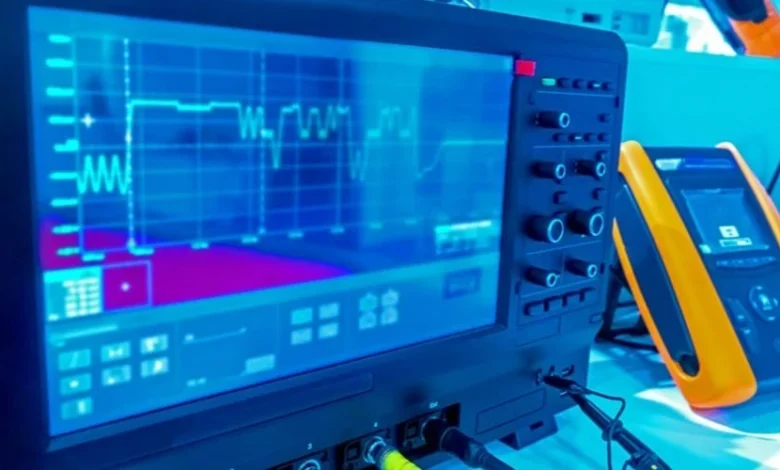Automated Test Equipment: Speed Up Testing & Reduce Errors

In the realm of electronics and manufacturing, automated test equipment is absolutely essential for guaranteeing performance and quality of products. The fast development in technology has raised the demand for exact and effective testing methods. By expediting the testing process, ATE reduces mistakes and increases output. ATE has become essential for quality control since sectors requiring great dependability and accuracy demand it.
What is Automated Test Equipment?
ATE refers to a computerized system designed to test and analyze electronic components, circuit boards, and devices. By automating the testing process, ATE reduces human intervention, enhances accuracy, and speeds up testing cycles. ATE is widely used in industries like aerospace, telecommunications, automotive, and consumer electronics. The core objective of ATE is to ensure products meet industry standards and function flawlessly.
The Importance of Automated Test Equipment
The role of ATE in product development and manufacturing cannot be overstated. Here’s why it is essential:
- Efficiency: ATE performs repetitive tests with high speed, reducing testing time significantly.
- Accuracy: The automation eliminates human errors, ensuring precise measurements and data collection.
- Cost-effectiveness: Despite the initial investment, ATE reduces long-term testing costs by increasing throughput.
- Scalability: Whether testing a single unit or large batches, ATE can handle varying production volumes effortlessly.
- Reliability: The consistent performance of ATE guarantees reliable test results for high-quality products.
Components of Automated Test Equipment
ATE consists of several essential components that work together to facilitate effective testing. The key elements include:
- Test Controller: The brain of the system that controls the test sequence and processes data.
- Measurement Instruments: These include oscilloscopes, multimeters, and spectrum analyzers used for measuring electrical parameters.
- Test Fixtures: Physical setups that hold and connect the devices under test (DUTs) to the ATE.
- Software: The programming interface that automates test execution and data analysis.
- Data Acquisition System: Gathers test data and provides insights for decision-making.
Types of Automated Test Equipment
There are various categories of ATE, each designed for specific applications:
Functional Test Systems
These systems verify if a device operates as intended by simulating real-world conditions. ATE used for functional testing ensures that products function correctly before reaching consumers.
In-Circuit Testers (ICT)
ICTs focus on testing individual components within a circuit board. ATE in this category checks for short circuits, open circuits, and component values.
Semiconductor Test Systems
These ATEs are used in semiconductor manufacturing to test integrated circuits (ICs) for defects and performance issues. ATE ensures ICs meet specifications before assembly.
Burn-In Testers
Designed to test the longevity and durability of electronic components, burn-in testers expose devices to extreme conditions. ATE in this category assesses product lifespan and reliability.
RF and Wireless Testers
For products utilizing radio frequencies, these testers evaluate signal integrity and performance. ATE in telecommunications and wireless industries ensures seamless connectivity.
Applications of Automated Test Equipment
The applications of ATE extend across various industries, proving its versatility and significance.
Aerospace and Defense
The aerospace industry demands high precision and reliability. ATE is used to test avionics, navigation systems, and communication devices to meet stringent safety regulations.
Automotive Industry
Modern vehicles integrate advanced electronics for safety and performance. ATE ensures automotive components, including sensors and control modules, function flawlessly.
Telecommunications
The telecommunications sector relies on ATE to test network infrastructure, mobile devices, and communication modules, ensuring seamless connectivity and performance.
Consumer Electronics
From smartphones to smart home devices, ATE plays a vital role in testing consumer electronics for reliability and quality before they reach end users.
Medical Devices
In the healthcare industry, precision is critical. ATE is used to test medical instruments, diagnostic devices, and imaging systems to ensure their accuracy and safety.
Advantages of Automated Test Equipment
The adoption of ATE comes with several benefits:
- Increased Productivity: Faster testing speeds lead to higher throughput.
- Higher Accuracy: Eliminates manual errors and provides precise results.
- Cost Reduction: Reduces labor costs and testing expenses in the long run.
- Consistency: Ensures uniformity in testing processes.
- Comprehensive Analysis: Advanced software in ATE provides detailed reports and insights.
Challenges in Implementing Automated Test Equipment
Despite its numerous advantages, ATE faces some challenges:
- High Initial Cost: The investment required for ATE can be significant.
- Complex Integration: Integrating ATE with existing manufacturing processes requires expertise.
- Maintenance and Calibration: Regular maintenance ensures the accuracy of ATE but adds to operational costs.
- Skill Requirements: Technicians and engineers need proper training to operate and program ATE effectively.
Future Trends in Automated Test Equipment
The evolution of technology continues to shape the future of ATE. Some key trends include:
- Artificial Intelligence (AI) Integration: AI-driven ATE enhances predictive analysis and self-learning capabilities.
- IoT-Enabled Testing: Internet of Things (IoT) integration allows remote monitoring and real-time data analysis.
- 5G and Wireless Advancements: As 5G technology expands, ATE will evolve to support higher frequency testing.
- Miniaturization: With electronic devices shrinking in size, ATE must adapt to testing miniature components effectively.
Conclusion
In the electronics and industrial sectors, ATE changes everything. It is an essential instrument for quality control since it may improve testing speed, accuracy, and efficiency. The long-term advantages of ATE exceed its disadvantages despite obstacles including high initial expenses and maintenance. The future of ATE seems bright with developing technologies like IoT and artificial intelligence, guaranteeing even more sophisticated and dependable testing solutions.
For firms striving for quality and precision, investing in ATE is a smart step that guarantees long-term success. The function of ATE will always be vital in providing consumers all around with premium goods as sectors change.




